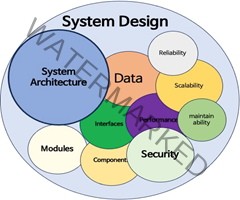
System design is a crucial aspect of software development that involves designing the architecture of a system to meet specific requirements and objectives. It encompasses various elements such as scalability, reliability, performance, security, and maintainability.
In system design, engineers analyze the requirements of the system, identify key components, define interactions between these components, and determine how data flows through the system. They also consider factors like load balancing, fault tolerance, data storage, and communication protocols to ensure the system functions effectively and efficiently.
Key considerations in system design include:
1. Scalability: Designing the system to handle increasing loads and user traffic without compromising performance.
2. Reliability: Ensuring the system operates consistently and reliably under different conditions.
3. Performance: Optimizing the system to deliver fast response times and efficient resource utilization.
4. Security: Implementing measures to protect data, prevent unauthorized access, and ensure compliance with security standards.
5. Maintainability: Designing the system in a way that makes it easy to update, modify, and troubleshoot.
System design often involves the use of various architectural patterns, such as microservices, event-driven architecture, and service-oriented architecture, to create modular, flexible, and scalable systems.
By focusing on these key aspects and leveraging best practices in system design, engineers can create robust and efficient systems that meet the needs of users and stakeholders.
